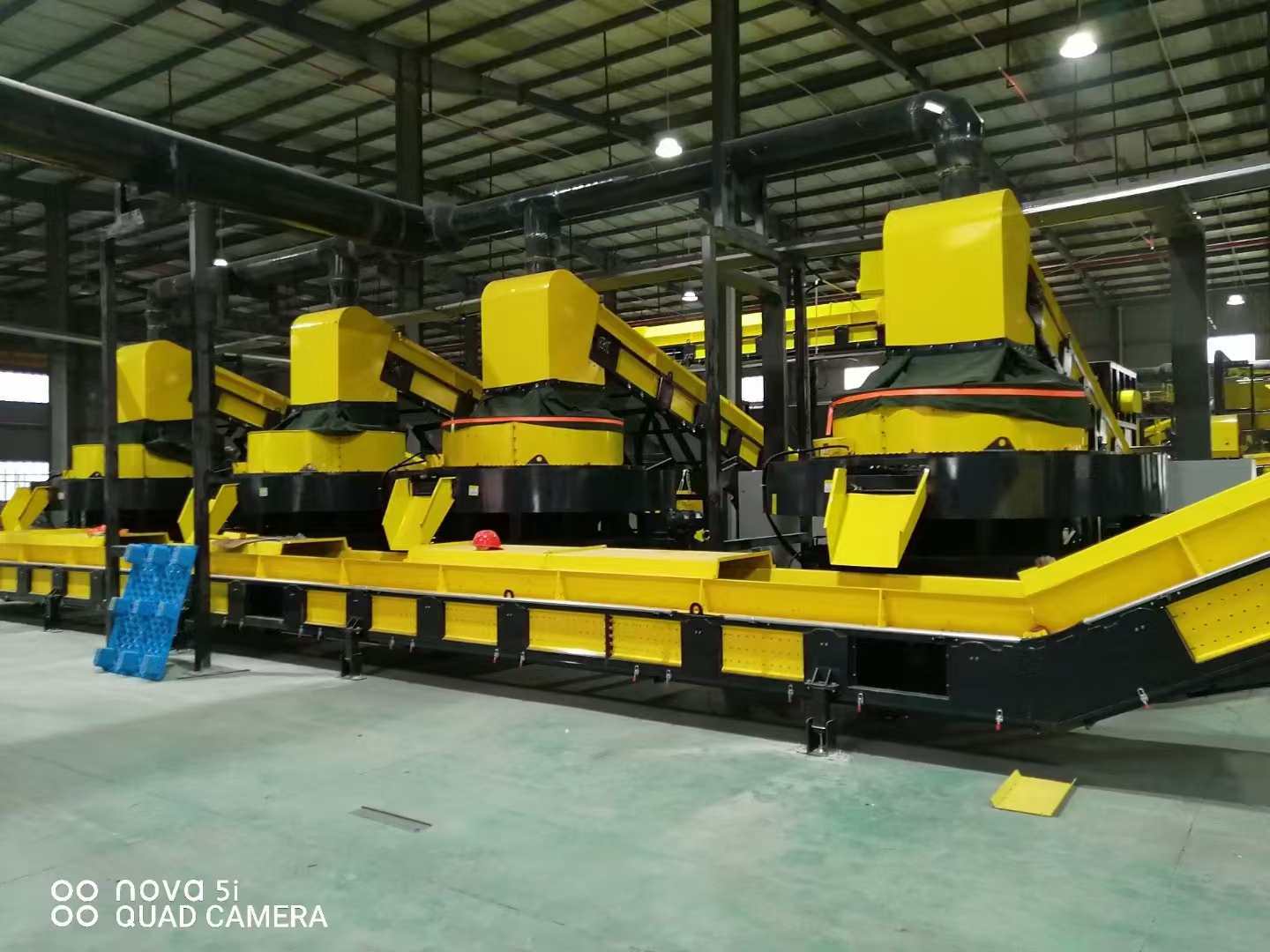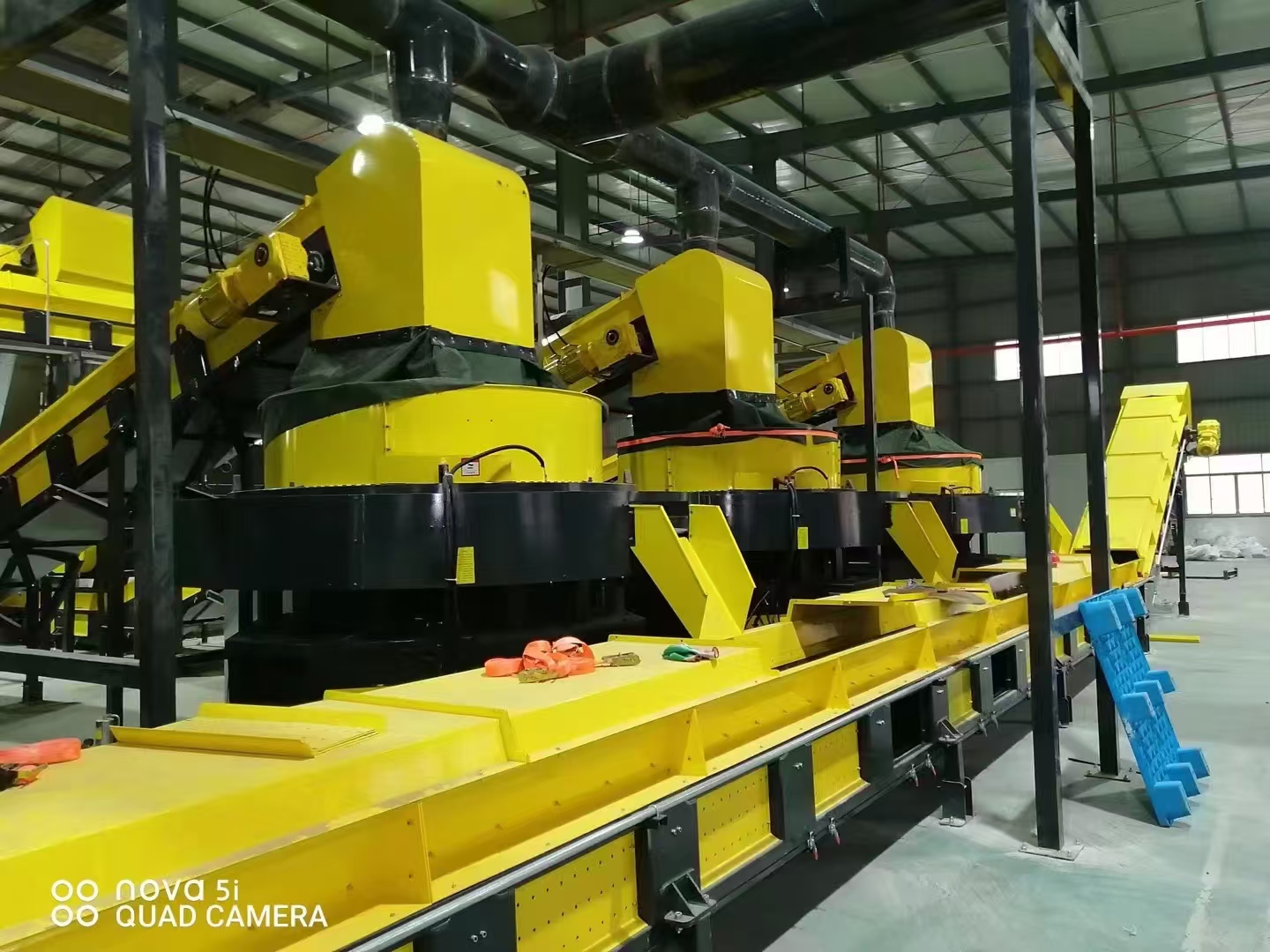How is RDF Pellet made?


Introduction to RDF Pellet Making Machines
1.In the quest for sustainable waste management and energy production, RDF pellet making machines stand at the forefront of innovation. These advanced machines are designed to convert non-recyclable waste materials into high-energy pellets known as Refuse-Derived Fuel (RDF). This process not only helps in managing waste effectively but also contributes to the generation of renewable energy.
2.RDF pellet making machines work by shredding and compressing municipal and industrial waste materials, such as plastics, paper, and textiles, into dense, uniform pellets. These pellets can then be used as an alternative to fossil fuels in various industrial processes, including cement kilns and power plants. By transforming waste into valuable fuel, RDF pellet making machines support a circular economy and reduce the environmental impact of waste disposal.
3.Equipped with advanced technologies for size reduction, blending, and pelletization, these machines ensure high efficiency and consistent quality of the final product. The versatility of RDF pellets makes them a viable option for reducing reliance on traditional energy sources and minimizing landfill use.
4.As industries and municipalities strive to meet environmental regulations and sustainability goals, RDF pellet making machines offer a practical solution for integrating waste management with energy recovery, paving the way for a greener and more resource-efficient future.
Working Principle of RDF Pellet Making Machines
RDF pellet making machines operate through a series of sequential processes to convert waste materials into high-energy Refuse-Derived Fuel (RDF) pellets. The working principle of these machines involves several key steps:
1.Waste Collection and Preprocessing:
①The process begins with the collection of non-recyclable waste materials, which can include plastics, paper, textiles, and other refuse.
②The collected waste is first sorted to remove any recyclable or hazardous materials and then shredded into smaller pieces to facilitate further processing.
2.Size Reduction:
The shredded waste is fed into a size reduction unit, such as a hammer mill or shredder, which further breaks down the material into finer particles. This step ensures that the material is uniform in size, which is crucial for consistent pellet production.
3.Blending and Conditioning:
The finely shredded waste is then mixed and conditioned to achieve the desired consistency and moisture content. Proper blending ensures that different types of waste materials are evenly distributed, which contributes to the quality and energy content of the final RDF pellets.
4.Pelletization:
①The conditioned material is fed into the pelletizing unit, typically a pellet mill or extruder. In this unit, the waste material is compressed under high pressure through a die to form pellets.
②The high pressure and temperature during pelletization cause the material to bind together, forming dense, uniform pellets. Some machines may include a binder or adhesive to improve the binding process and pellet durability.
5.Cooling and Screening:
①After pelletization, the hot pellets are cooled using a cooling system to reduce their temperature and prevent degradation.
②The cooled pellets are then screened to remove any undersized or oversized particles, ensuring that only pellets of the desired size are collected for use.
3.Storage and Packaging:
The final RDF pellets are stored in silos or bins and can be packaged for transportation to end-users. These pellets are ready to be used as a renewable energy source in industrial applications, such as in cement kilns, power plants, or other combustion processes.
Advantages of RDF Pellet Making Machines
1.Effective Waste Management:
RDF pellet making machines help manage non-recyclable waste materials, such as plastics, paper, and textiles, by converting them into valuable fuel. This reduces the volume of waste sent to landfills and helps in tackling the growing problem of waste accumulation.
2.Energy Recovery:
The RDF pellets produced have high calorific value and can be used as an alternative to fossil fuels in various industrial processes, such as in cement kilns and power plants. This promotes the recovery of energy from waste, contributing to a more sustainable energy landscape.
3.Reduced Environmental Impact:
By utilizing waste materials for energy production, RDF pellet making machines decrease reliance on conventional fossil fuels, thereby reducing greenhouse gas emissions and environmental pollution. This aligns with global efforts to mitigate climate change and environmental degradation.
4.Resource Efficiency:
The process of converting waste into RDF pellets supports a circular economy by maximizing the value derived from waste materials. It reduces the need for raw materials and optimizes the use of existing resources, leading to better overall resource efficiency.
5.Cost Savings:
Using RDF pellets as a fuel can be cost-effective compared to traditional fossil fuels. This is particularly advantageous for industries with high energy consumption, as it can lead to significant savings on fuel costs.
6.Improved Waste Handling:
The pelletizing process helps in improving the handling and transportation of waste materials. RDF pellets are easier to store, transport, and manage compared to loose or shredded waste, leading to more efficient logistics.
7.Regulatory Compliance:
RDF pellet making machines assist in meeting environmental regulations and standards by providing a compliant method for waste disposal and energy recovery. This can help businesses avoid fines and penalties related to waste management.
8.Versatility:
RDF pellets can be used in a variety of applications beyond energy production, such as in industrial heating and as a supplementary fuel. This versatility makes RDF pellets a valuable commodity in various sectors.
9.Economic Development:
The deployment of RDF pellet making machines can create job opportunities in the waste management and energy sectors, supporting local economies and promoting industrial growth.
10.Innovation and Sustainability:
The technology behind RDF pellet making is continually advancing, leading to more efficient and environmentally friendly solutions. This fosters innovation and supports the development of sustainable waste management practices.
-
 Trommel screenTrommel screen, also known as drum screens, are widely used in various industries for sorting and separating materials.Get Quote
Trommel screenTrommel screen, also known as drum screens, are widely used in various industries for sorting and separating materials.Get Quote -
 Crop straw double shaft shreddApplications:Biomass Energy Production: Shredded straw can be used as a feedstock for bioenergy plants to produce electricity or heat.Livestock Feed: Reduced-si...Get Quote
Crop straw double shaft shreddApplications:Biomass Energy Production: Shredded straw can be used as a feedstock for bioenergy plants to produce electricity or heat.Livestock Feed: Reduced-si...Get Quote -
 Zhongcheng Air Drum SeparatorAir drum separators effectively separate lightweight materials (e.g., plastics, paper) from heavier materials (e.g., metals, glass). This high efficiency is cru...Get Quote
Zhongcheng Air Drum SeparatorAir drum separators effectively separate lightweight materials (e.g., plastics, paper) from heavier materials (e.g., metals, glass). This high efficiency is cru...Get Quote
-
2024-07-16Drum screen garbage processing machine for msw recyclingManaging municipal solid waste (MSW) efficiently is crucial for urban areas. Drum screen garbage processing machines are a game-changer in this field. They ensu...
-
2024-10-23Solid waste recycling plantOur company engaged in waste sorting system . We are professional about waste sorting system . We have professional technical team. Professional technical team...
-
2024-07-10msw trommel screen for waste recycling machineThis equipment is suitable for the particle classification process in all walks of life:The equipment is simple, easy to operate,and can be operated with a larg...
-
2024-06-11Optimize Your Waste Management Today with Our Advanced Drum ScreensUnderstanding the Mechanism and Optimization of Drum Screens for Waste Management
-
2024-04-13Vibrating FeederA vibrating feeder is a mechanical device used to convey materials, typically in bulk, from one location to another in a controlled manner. This equipment is co...



